How to properly cover hydrangeas for the winter
In order for hydrangeas to delight you with flowering next year, it is necessary that they properly go to winter, namely, they must be covered for the winter. However, do not rush to cover all your hydrangeas, not every species needs this, there are quite winter-hardy species and varieties of this wonderful shrub.
This article will be devoted to what hydrangeas, when, how and what to cover for the winter.
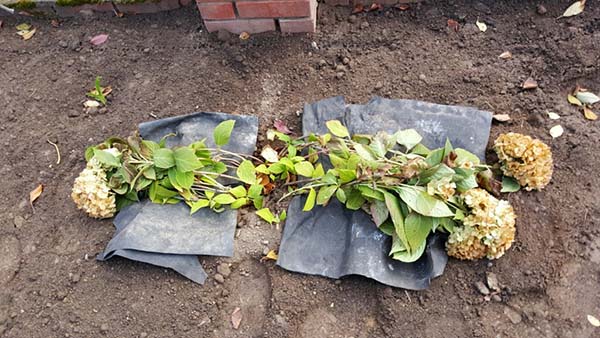
Content
What hydrangeas need to be covered for the winter
First, you need to figure out what types of hydrangeas need to be covered, and then what methods and materials are best for this.
Paniculata hydrangea no need to cover, they are absolutely winter hardy.
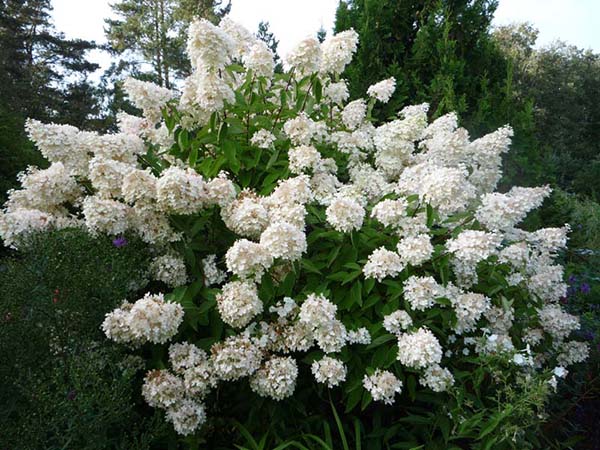
Tree-like hydrangea also no shelter required and is absolutely winter hardy.
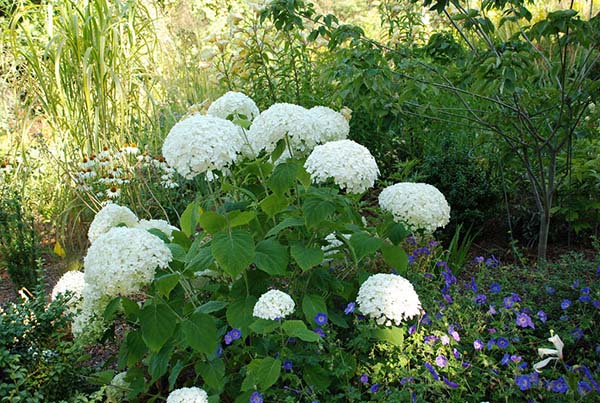
Note! Still young hydrangeas planted in open ground in autumn, need some insulation of the root system, and mulching will be enough for them.
And here large-leaved hydrangea very afraid of frost, if it is not covered, then the apical buds on which it blooms will die, which means that next year it will simply not be able to dissolve its inflorescences. Moreover, this applies to new remontant varieties that bloom on the shoots of the current year.
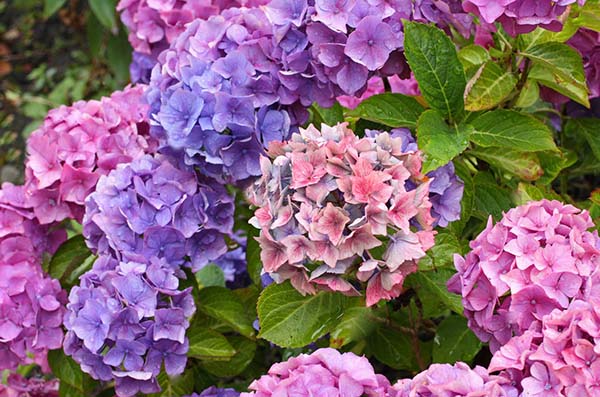
Important! Similar to large-leaved, you also need harbor serrated and oakleaf hydrangeas.
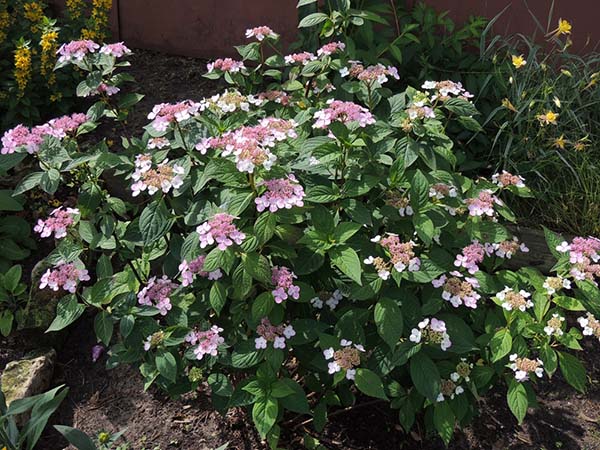
Shelter (mulching) paniculate hydrangeas
In this case, we are not talking about a classic shelter (it is not required for paniculate species), but about mulching the soil under a bush (this is very light warming and good nutrition for a quick spring start), in other words, about hilling it in a sense. As such mulch, you can use coniferous litter, peat (acidic and neutral), and compost can also be added to the peat. If there is absolutely no way to get such nutritious mulch, then you can spud it with ordinary garden soil (but it is better to take it not from under the bush, but from some other place in the garden). In this case, the thickness of the mulching layer should be about 8-15 cm. Moreover, it should be poured along the perimeter of the bush, starting from the center and capturing up to 25-30 cm from it.
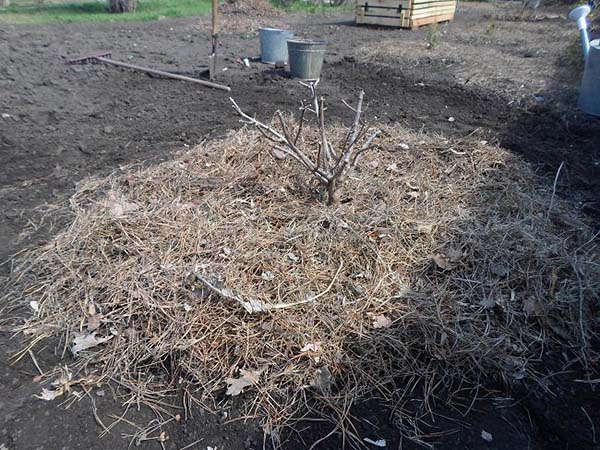
Note! If panicle hydrangeas very young orfirst year of planting, then the preparation for the winter should be more thorough.
Shelter (mulching) of treelike hydrangeas
As in the case of mulching paniculate hydrangea, the near-stem circle of a tree species should also be mulched with a nutritious substrate (similarly, coniferous litter or peat + compost or rotted manure) so that the plant quickly recovers after winter in spring.
When to cover large-leaved hydrangeas for the winter
Large-leaved hydrangeas are afraid of sharp and early autumn frosts, as well as late spring ones, but systematic winter ones - they tolerate calmly. Therefore, they must always be covered before the first frost, because their flower buds are afraid in the fall of even a minimal temperature drop down to -1 ..- 2 degrees.
It is optimal to start covering hydrangeas when the daytime temperature has already dropped to +6 .. + 8 degrees, and the nighttime temperature to +2 .. + 4.
Thus, the approximate timing of the shelter of large-leaved hydrangea in the middle lane (Moscow region) is the first half of October.
If you do not have time to cover before the first frost, then the hydrangea foliage will freeze and become black and slimy. Therefore, it is recommended to remove the foliage and cover the plant before the first ones hit, albeit mild frosts.
Important! All lower leaves can be torn off simply by hand, pulling slightly downward.
Note! The upper (leaves), which are located next to the buds, are best left, they will protect them (buds) in winter.
When to take cover from hydrangeas in spring
First of all, you need to navigate the weather. You can name only approximate terms - if you often have recurrent spring frosts, then it is better after the May holidays, if not, then before the May holidays. In any case, as soon as the threat of low temperatures passes, you can begin to gradually remove the shelter.
How to cover a large-leaved hydrangea
Next, let's talk directly about covering materials that are suitable for sheltering large-leaved hydrangeas for the winter, as well as about the methods and combinations of these materials.
Worth knowing! In the middle lane (Moscow region), the land, as a rule, freezes by a meter or more in winter, and half a meter under the snow. Therefore, the purpose of "winter warming" is to protect the plant from sudden temperature changes, since the temperature of even frozen ground with some thermal insulation is higher than the ambient temperature.
Leaves
Important! Covering the hydrangea with leaves only is clearly not enough, you need to put at least spruce branches on top, or other suitable covering materials: non-woven material (lutrasil, spunbond), burlap, in extreme cases - plastic wrap. Or you can do the opposite: first wrap it up in a covering material, and then cover it with leaves, but in this case you need to make a special frame.
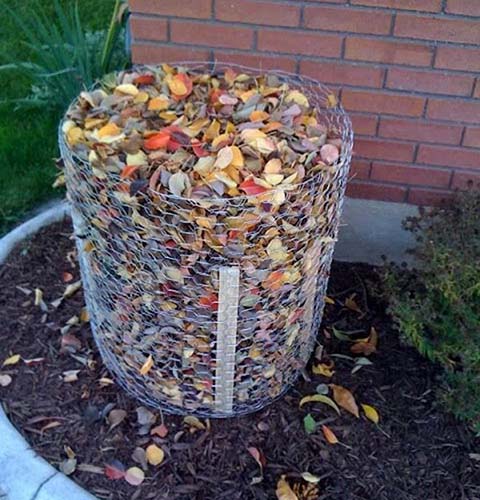
For insulation, you can cover the hydrangea bush for the winter with dry chestnut or maple leaves. The advantage of using the leaves of these particular trees is that they do not rot during the winter.
Attention! Do not use the leaves of fruit trees and berry bushes.
Spruce branches
Lapnik is excellent for covering almost all covering plants, but, as a rule, they are covered with it on dry leaves, or over covering material, because spruce or pine branches are clearly not enough.
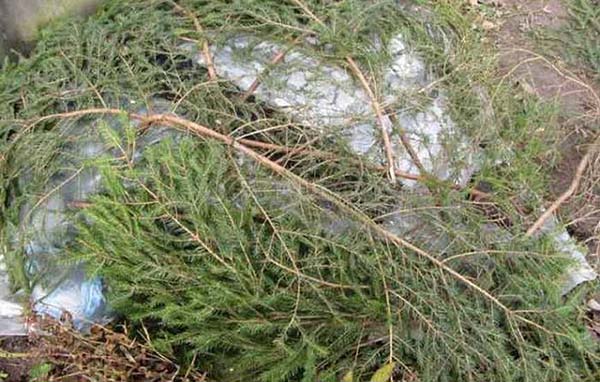
Advice! In the forest you can always find broken branches, therefore it is not necessary (and should not) to break them out or saw off on purpose. It's another matter if you have your own ephedra, in which case you can use the branches left after annual pruning.
Non-woven covering material (spunbond, lutrasil)
This is the most popular covering material for all gardeners and gardeners. Its main advantage is that it breathes (breathable). As a rule, 2 layers of lutrasil or spunbond (with a density of at least 60) are sufficient to cover a large-leaved hydrangea, for example, in the middle zone (Moscow region), but some growers recommend covering even 3-4 layers. Moreover, under such a shelter, hydrangea winters beautifully even without snow.
Advice! It is convenient to cover overgrown and lush bushes by placing arcs and securing a non-woven covering material over them.
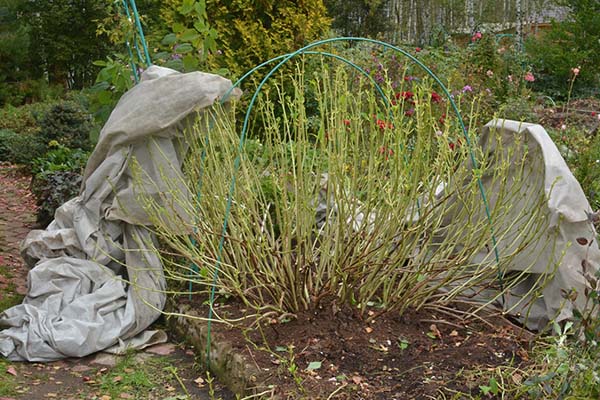
By the way! Many gardeners first cover with 1 layer (when the temperature is positive), and then wrap it up with the second one (when a sharp cold snap begins).
Video: how to cover a large-leaved hydrangea with nonwoven fabric for the winter
Sackcloth
Burlap is often used to hide large-leaved hydrangea. They cover it in 2-3 layers, and on top with additional plastic wrap, while it is better to leave vents below (on the sides). In the spring, the film must be removed as early as possible, otherwise it becomes very hot under it.
Note! But lutrasil practically does not allow water to pass through, in the spring you can not rush to remove it.
Polyethylene film
By the way! Similar to the film, you can use roofing material.
Many summer residents in the old fashioned way like to cover their plants with a film, but you should know that it does not allow air to pass through, which is very important for normal wintering. However, the film perfectly protects against excess moisture, because it is waterproof, but unlike hydrangeas roses, they are not afraid of dampness, so there is no need for such reinforced waterproofing. But it should also be borne in mind that under the film at positive temperatures it quickly becomes very hot.
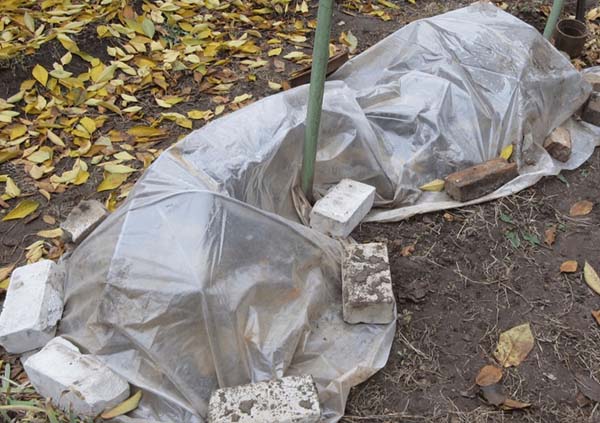
Application option! You can first cover the hydrangea with 2 layers of double non-woven fabric (lutrasil or spunbond), and on top with additional film. In this case, it is better to open the film so that the ends are ventilated (side walls), and condensation does not collect under the film.
In early spring, the film must be removed. Non-woven covering material should be opened gradually on warm days for ventilation, and closed at night.
How to properly cover large-leaved hydrangeas for the winter
Important! It is best to cover non-frost-resistant plants with an air-dry shelter (it is almost always dry under the shelter, because moisture does not get in, but it is itself breathable).
A step-by-step guide to winter shelter
Step-by-step instructions for sheltering a large-leaved hydrangea for the winter:
- 1. Tear off all leaves and cut off the inflorescences.
- 2. Gently bend the shoots, securing (pinning) them to the ground using slingshot sticks or metal brackets (for example, bent electrodes).If the bush is large, then it is convenient to bend in different directions - half a bush - to the right, half a bush - to the left.
Advice! Some gardeners advise placing wooden pallets (boxes) or boards under hydrangeas.
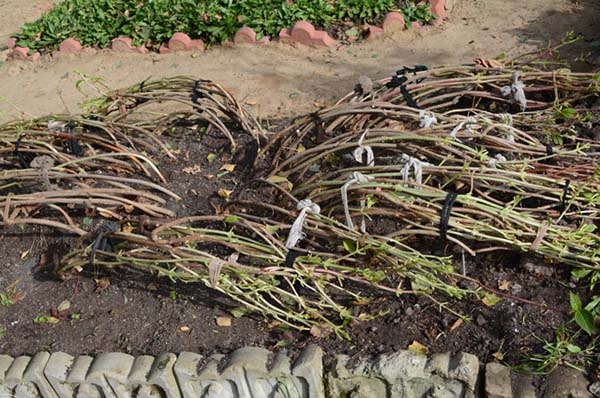
By the way! Some florists do not bend down, but simply wrap the hydrangeas with non-woven materialbut leave flowersstanding it is still quite risky, because in this form they are more susceptible to freezing (you need to cover it in 3-4 layers).
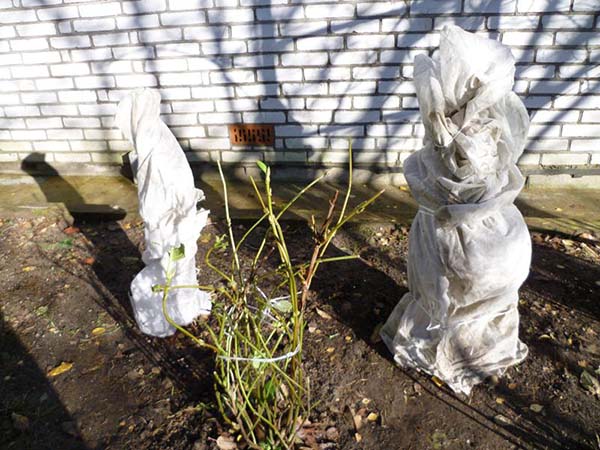
- 3. Mulch the center of the bush. For example, you can spud with peat (sour and neutral), coniferous litter, bark (20-25 cm).
However! Many gardeners, on the contrary, do not fall asleep with anything and do not huddle the bushes so that they are better ventilated (and not weed out), but if you experience prolonged 25-30 degree frosts, then it is better to at least mulch.
Don't forget to open the bushes in the spring!
- 4. Cover the top with dry leaves of decorative trees (chestnut or maple). Especially important for young plants and for regions with very cold winters.
- 5. Further, if desired, you can put additional branches of spruce branches (or cover them already on top of the covering).
- 6. Cover with a special covering material.
- 7. Fasten on the sides on all sides with bricks or boards (as an option - with water bottles).
What else needs to be done in the fall before hiding hydrangeas for the winter
The number of mandatory activities that need to be carried out during the autumn preparation of hydrangeas for shelter for the winter also include:
- Autumn feeding.
- In the first half of autumn (late September) watering stops (and before that it must be very abundant).
- Autumn pruning.
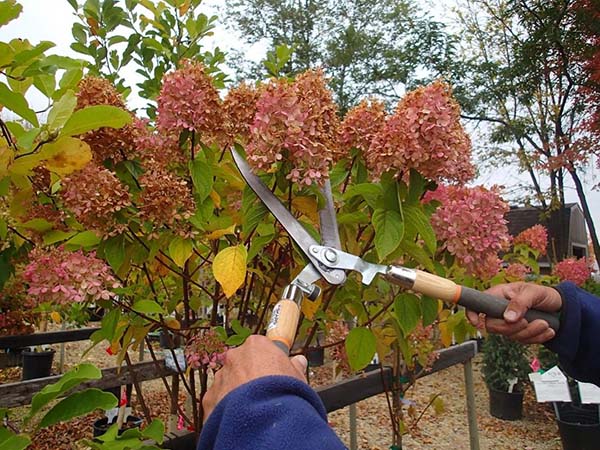
Note! About, how to properly prune hydrangeas in autumn, You can find out from this material.
- Cleaning fallen and cut leaves from the bush.
- The most immediate hideout.
Video: preparing a large-leaved hydrangea for winter
Thus, covering large-leaved hydrangeas for the winter is a mandatory procedure, unless, of course, you are interested in their flowering, and not the foliage. Of course, you have to tinker, but it is usually worth it. Although, if you are a lazy florist, then you better stop at growing paniculate and tree-like varieties that you do not need to cover for the winter, unless you mulch.

